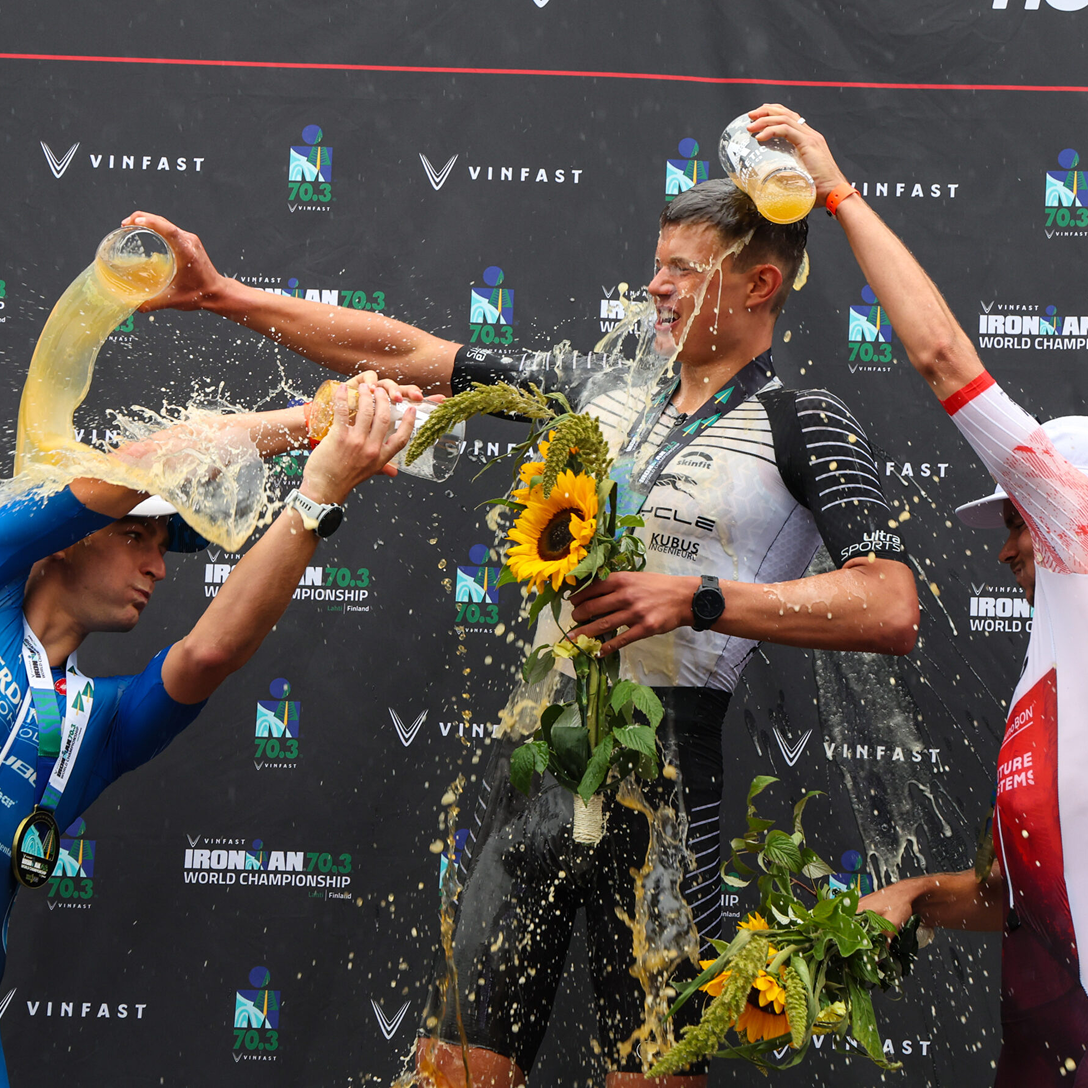I love beer — especially after long runs or races. And even more so on hot days. Racing in Germany have taught me one thing: beer at the finish line just feels right. Important clarification — I’m talking about non-alcoholic beer.
Non-Alcoholic Beer Has Become an Essential Part of the Sports World
Non-alcoholic beer is finding its way deeper into our lives — and sport is a big part of that. Take Athletic Brewing Co. in the U.S., founded by a former hedge fund manager who became an ultramarathoner. Today, they produce over half of all non-alcoholic craft beer in the U.S. and are official partners of Ironman and USA Triathlon.
In Europe, Erdinger Alkoholfrei sponsors major races like the Berlin Marathon, Stockholm Marathon, and Vienna City Marathon. They also support Team Erdinger Non-Alcoholic, featuring top German professional triathletes (including 2024 Ironman Kona Champion Patrick Lange) and biathletes like Simon Schempp.
In Russia, Baltika (the country’s largest brewery) is a sponsor of the Moscow Marathon, Kazan Marathon, White Nights Marathon (St. Petersburg).
All this isn’t just for show. In every case, non-alcoholic beer is promoted as a natural isotonic drink — sugar-free, alcohol-free, and refreshing. We’d love to believe it. But just to be sure, we decided to take a closer look.
Non-Alcoholic Beer: Is It Really Isotonic?
Turns out — yes, sort of.
Non-alcoholic beer (0.0–0.5% ABV) typically contains:
- Water
- Carbohydrates (glucose, maltose)
- Electrolytes like potassium, magnesium, sodium
- B vitamins
Its osmotic pressure is similar to blood plasma, which technically makes it isotonic. That means it helps replenish fluids, some minerals, and carbs — like a basic sports drink.
But What About Electrolytes?
That’s where things get tricky.
- Sodium: very low (~5–10 mg/100 ml), which is not enough to support hydration during intense sweat loss
- Potassium: fairly good levels (~30–60 mg/100 ml)
- Magnesium: relatively high, but not a primary player in acute performance
- Calcium: minimal
Bottom line: it’s not a reliable source of sodium — the key electrolyte for preventing cramps and staying hydrated in the heat.
When Should You Drink It?
✅ Good use cases:
- After your run, to rehydrate in a tasty, satisfying way
- As part of overall recovery, alongside salty snacks and water
- As a “social isotonic” — it tastes good, it’s refreshing, and it’s alcohol-free
❌ Not recommended:
- During your run
- In hot conditions as your primary electrolyte source
- If you’re losing a lot of salt and sweat over long efforts
Non-Alcoholic Beer vs. Sports Drinks vs. Oral Rehydration Solutions
If we’re just looking at numbers, sports drinks win for hydration and oral rehydration salts like Rehydron win for restoring electrolyte balance.
But non-alcoholic beer wins where it counts — taste 😄
Final Thought
Non-alcoholic beer brands are working hard to associate themselves with a healthy, active lifestyle — turning beer from a “post-race indulgence” into a legitimate, enjoyable part of the sport experience.
Stay refreshed, stay strong,
